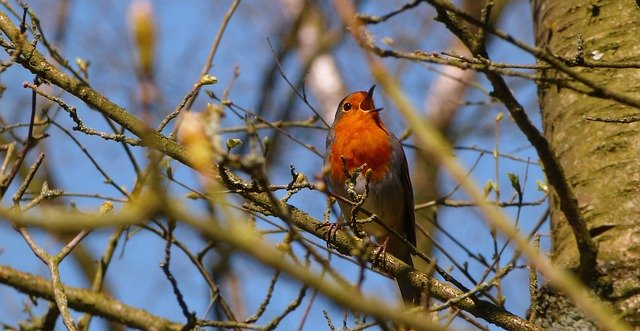Most all of us enjoy listening to some type of music. Whether it’s gospel, country, classical, jazz, or rap, the various combinations of notes, rhythm, and melody tickle our ears and soothe our souls. With the arrival of spring I get to enjoy one of my favorite genres: birdsongs! Without a single rehearsal, these winged musicians provide beautiful entertainment at no cost! But their abilities to produce music are incredibly complex.
Far from being random sounds, these musical arrangements include intentional organization and combine melody, rhythm, unity and variety that would impress any music theory teacher. Several classical composers have incorporated birdsongs into their compositions including Vivaldi, Handel, Mozart, and Beethoven.
Researchers have studied the musical talents of birds and have discovered that their voice boxes are especially and specifically designed to make their music. Instead of a larynx with a single set of thin membranes like we use to speak and sing, birds have a syrinx with two sets of such membranes, each at the top of a different lung.
Because these two voice boxes are wired independently, birds can make different sounds from each at the same time. Blue jays, for example, can sing the notes of a major chord simultaneously and all without a single voice lesson. Birds also possess perfect pitch enabling them to sing in a given key without needing any prompt, and some even transpose songs into different keys.
According to author Stuart Burgess in his book, Hallmarks of Design, birds can also inhale so quickly that there is no detectable pause in their songs. Canaries can even sing with air from one lung while breathing with the other. Some bird species can sing up to 45 notes per second consisting of several hundred notes per song. Normal birdsongs last from 4 to 20 seconds and are made up of several notes arranged in musical phrases.
While concert pianists build their repertoire of selections they perform, birds do likewise. Our mockingbirds can remember and sing up to 150 songs but nightingales can do twice as many! Not bad for birdbrains!
“But wait,” as the TV salesman says, “There’s more!” Not only do birds make their music individually, some also cooperate with each other. Matched counter-singing between two opera performers produces some of our most beautiful music, but certain birds have been doing it for years. By echoing back the song another just sung, the second bird will suddenly add a variation on the theme of the first astounding researchers who cannot explain such advanced expertise.
Even more remarkable is how some species sing duets combining their voices to produce one song. African shrikes and a few other birds sing alternating notes in the same song to produce a single composition. Known as antiphonal singing, this skill requires not only perfect timing but that both know the musical score and agree which will sing what. In whose choral class did they learn such advanced skills?
We do know, however, that music is not random sound. It takes intentional organized effort along with planning, practice, skill, and specialized tools. How insulting it would be to the instrumentalists, vocalists, and composers for us to state that our favorite song came together by accident. And yet that is what we do whenever we accept that canaries, cardinals, and all the rest are products of evolution.
If we humans were to design a mechanism to produce such complicated sounds with perfect precision and harmony, it would require a combination of complex computer programming and intricate mechanical instruments. Even then, it would likely take us years to create something capable of making such incredibly beautiful music. And yet we are surrounded by such creations every spring morning!
The ability of over 4000 bird species to sing beautiful songs points unmistakably to an incredibly intelligent Creator who designed them for this very purpose. As you hear the birds sing this spring, be sure to praise the God who designed them and us!
Enjoying the music, George
